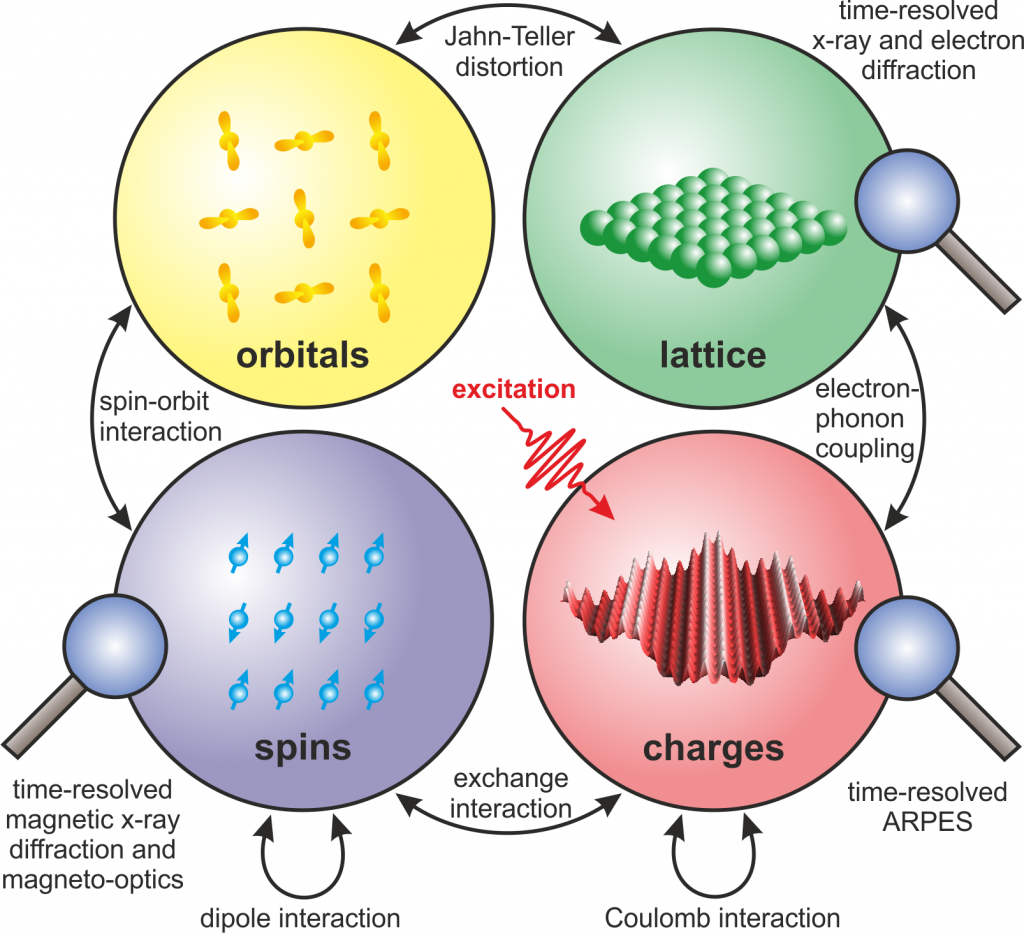
Ultrafast dynamics of elementary processes in solids and at interfaces with specific focus on the interactions between electrons, phonons and spins: This line of research addresses the dynamics of elementary processes on their relevant time scales, employing ultrafast laser spectroscopy (with, typically, femtosecond time resolution). Both existing and newly developed spectroscopic techniques are used to study the electronic structure, excited state dynamics, optically induced phase transitions and low-energy excitations including lattice dynamics and spin dynamics in solids and at interfaces.
One of the deeply intriguing aspects of solid state physics is how many-body systems with countless particles, interactions, correlations and excitations organize such that order emerges out of the chaos. This often leads to very useful and fascinating properties, e.g. superconductivity, magnetic order, metal-isolator transitions etc., emerging due to these interactions in materials often referred to as strongly correlated or quantum materials. At the core of such complex emergent states lie the interactions between the elementary degrees of freedom in such materials, the electronic, spin, orbital and lattice degrees of freedom. Combining several quantitative ultrafast time-domain techniques to study and disentangle the dynamics of the individual degrees of freedom can yield valuable information on the forces and interactions that ultimately govern material properties and functionality.
The combination of inorganic and organic semiconductors promises hybrid functionality for optoelectronic and light-harvesting applications. Any functionality of such inorganic/organic hybrid system is governed by the electronic levels and resonances at the interface. These determine the efficiency of charge and energy transfer processes, which occur on ultrafast timescales (femto- to picoseconds) and compete with relaxation channels as polaron formation, decay to dark (triplet) states, or trapping at defect sites. Also the electronic structure of the inorganic semiconductor surface is vital for charge and energy transfer processes. Effects like surface band bending and surface photovoltage shifts can occur as well as the formation of thin charge accumulation layers with peculiar non-equilibrium properties.
